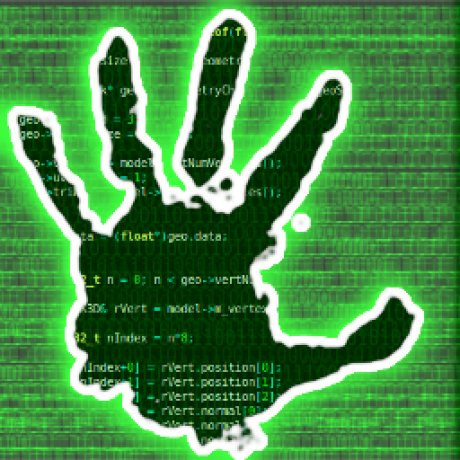
This is excellent recycling of the cringe original

What’s the original?

I have had to spend so much more time thinking about drivers on Windows than on Linux it’s not even funny

And what are Nvidia users supposed to do?

I have never had problems with Nvidia drivers on Linux mint detects them and ask if you want to install the official drivers

LMDE didn’t install the DKMS modules on my kid’s PC, so the nVidia drivers never loaded after a new kernel got installed. I do enough tech support at work so we chucked Pop!_OS on the PC (and set it up with btrfs and timeshift-autosnap) instead. No more problems.
May not be a problem with mainline Mint, of course, but there are weirdos like me who prefer the Debian edition.

Don’t be ashamed of using Debian!

Far from it, Debian is one of my favorites, though I run EndeavourOS on my main machine.
It’s Linux Mint Debian Edition that’s the oddball, but in a good way.

They’re supposed to buy an AMD card, obviously. /s

I wish AMD had a competitive 4090 alternative

Use POP OS which has NVIDIA Drivers in the iso

Or Nobara which has a dedicated Nvidia install tool in its welcome screen

I’m starting to wonder if this is a meme or if people are actually having problems.

Less about problems and more about performance/features in games. How much of a hassle is it to get dlss, ray tracing etc running? How’s the performance impact from not properly supported drivers.

…to let the distro pick the best driver for you? That’s what I do at least.

It depends on your distro

cry because no Wayland

I have spent very little time worrying about drivers on either.
On windows geforce came preinstalled and I just updated it occasionally when something didn’t work
On NixOS I add one line to my config file and it handles Nvidia drivers for me and updates with the rest of my packages

Ah yes, windows where I have to somehow figure out how to install the drivers for my network adapter before I can actually connect to the internet, on top of having to go to a different website for each device that needs a driver to find the correct one, download it and install it.
Vs Linux, where network (and most essential) drivers are baked into the kernel, and all other drivers (for peripherals, etc) can be had via a package manager, where you can often find free and open source solutions. Also, video drivers are automatically installed with the OS (provided you are using a distro with a proper graphical installer for ease of use, cough use Endeavour cough), and automatically updated when the system is updated.

I just installed Windows on my daughter’s new [to her] computer last night and this did not happen. Don’t get me wrong, I loathe Windows, but c’mon.

I had the ethernet in my desktop mobo not work when I tried upgrading to win11. Worked fine in 10 but no internet on 11.
I also had a very difficult time getting a Xbox wireless controller adapter working on win 10 without spending about 2 hours searching.
Windows usually works but sometimes it just fucking doesn’t. Linux isn’t perfect either but I usually don’t have issues with my Ethernet ports not working.

I think hiccups are going to be inevitable at times no matter what you’re using, but I don’t expect total disaster to befall you either, no matter what you’re using. I will admit that I was miffed as hell when that TPM bullshit came up when I was installing Win11 last night but a quick download of Rufus and a bootable USB installation cleared that up right quick.

What kind of weird or shitty NIC you’re using that needs a specific driver for Windows?

Lenovo IdeaPad Pro 5 Gen 8 Notebook comes with a MEDIATEK MT7922. Windows 11 does not want to install unless you circumvent the requirement for Internet or supply it with a manually downloaded driver.
Linux? Just works.

TP-Link Archer T6E, one of the most popular on the market
- argv_minus_one ( @argv_minus_one@beehaw.org ) 2•10 months ago
The wireless kind, presumably. Those always need their own firmware and therefore their own driver.

I tend to have driver issues more so with Linux than windows in my experience. Both seem to be capable at the very least of automatically installing a lot of the drivers without user intervention.

When I first tried Windows XP, I had to figure out how to install storage drivers in order to install the OS.

And back at that time if you installed any flavor of Linux you were lucky if the OS install didn’t fuck itself over, also God help you find drivers, assuming that they even existed. At least xp would function.
As of windows 10, windows will always function on pretty much any hardware out of the box. Some obscure Chinese WiFi dongles might have some issues, but main board drivers are always right there.
Linux users have this weird echo chamber where they seem to think that Linux just works. It can but it’s a 50/50 chance that it won’t and you’ll spend hours troubleshooting. Also os updates on Linux have a high probability of borking the entire os.
Windows, for all of it’s many many faults, generally does “just work”. It might not be perfect, but it will function.
- argv_minus_one ( @argv_minus_one@beehaw.org ) 4•10 months ago
And back at that time if you installed any flavor of Linux you were lucky if the OS install didn’t fuck itself over
I was using Linux religiously back then, and this is false. As long as there’s a driver for all of your hardware, it generally worked fine.
But that “as long as” is doing some heavy lifting. The usual suspects were pretty much the same as now: Broadcom, NeoMagic, and NVIDIA. Some cheap printers and modems were problematic as well, but if you paid for good hardware, it would probably work.

And that’s the rub. You have to very specifically choose your hardware for Linux. Or at least you had to back then. It’s not quite so bad now, but back then it was a real showstopper. Especially broadcom. That caused me no end of issues back in the day.

If you want to have some fun install Windows 10 on a hard drive. Disk usage will go to 100%. It doesn’t do this on SSDs except maybe very rarely. I’m pretty sure this is not a bug, but intentional so that people will buy a new PC. Windows 7 will run flawlessly on the same hardware. Although Linux is starting to demand higher hardware specs than it deserves.

I had a similar situation with my ryzen 1600 motherboard, except it was the sound card. Everytime windows updated it would dump the driver I installed and try another one that was broken. I had to keep my sound drivers on the desktop so I could reinstall them. This occurred even after I reinstalled windows 10 on a different ssd.

Nowadays it’s more of a fight against the update-provided drivers though.

Maybe for now, but as soon as more people switch to Windows 11 or Microsoft apps that constantly show you ads and are basically spam / adware themselves, Linux will get more appealing.
Microsoft is unfortunately learning from social media companies. Not only do you PAY for the product, you are also the product, and get your personal info stolen and get served ads even while you pay.
It’s getting to the point where I’m seriously eyeballing Mint again, or Kubuntu. And I’m the kind of person that’s generally too lazy to even dual boot anymore.

Sorry for the uncalled advice, but you might want to avoid Ubuntu. Canonical (the company behind Ubuntu) is being rather obnoxious pushing for a technology called “snaps” that has a bunch of issues, among them performance.
Mint is fine. In fact I’m distro-hopping from Ubuntu to Mint again.
I don’t Mint the uncalled, ty.

Just do it. I used Windows mainly out of apathy for years. But once I made the switch, I never looked back. Mint is easy to use and doesn’t get in the way. And there’s zero shitfuckery going on.

So far, I find Mint massively less frustrating to use than Windows. It feels faster, too.
Windows is so full of bullshittery, it’s not even funny.

Linux seriously needs to figure out laptop battery life. Not much chance of going mainstream when installing it means a 50% drop in your battery life. Until then, I’ll use Linux on my desktop and just disable all the adware spam shit in Windows on my laptop.

That’s the job of the manufacturer. Check out system76, framework and tuxedo laptops

I have not had this issue with three or four laptops running Linux over the years. Power management turned off somehow maybe?

I installed Linux on my old main laptop and battery life went up by like 2 hours lol. You might want to look into battery life solutions like tlp.

How do you recognize a Linux user?
You don’t. They’ll tell you at the first opportunity.
I am a vegan, Linux, unsexual. Thanks for asking.

You forgot that you were using arch, btw.

How do you even search for drivers in Linux? I thought this was a windows only thing

You need to if your device isn’t officially supported. This is pretty common for USB wifi cards.
There’s a DB of officially supported cards , and if your card isn’t there then you have to look up for a driver.
Usually they’re fairly easy to find with just googling.

If it’s not in the Kernel, write a driver and upstream it. Be a man.

And this is a clear example of how to keep people away from Linux, nothing push more people out of a community than shamming.

Easier said than done. I did want to look into writing wifi drivers but imo these are the most difficult drivers to write code for.

On ubuntu-based distros, you can use driver manager.

I’ve been using Linux for almost 20 years, and I can’t remember the last time I had to stress over drivers. Of course, I always check Linux compatibility when I buy hardware.

I’m embarrassed to say I’m a SE and don’t know anything about Linux. What makes it worth using over windows?

As a software engineer, the nicest thing is that the whole programming ecosystem integrates with Linux. Git, SSH, Docker, you get natively in your OS. Even dumb shit like file path separators, line-endings, file permissions. Most programming languages make the assumption that you’re on a UNIX system (Linux, macOS, BSD).
Aside from that, Linux is fucking awesome as an SE, because everything is open-source. Find a bug in a program you use? You can fix it, if you want. Want to learn how a specific program works? Just look at the source code. Or its config file. Or its logs. Everything wants to teach you about itself.
And personally, I also just love the usability. The built-in file manager, terminal, PDF viewer etc. are good. The built-in text editor is no IDE, but it’s up-to-snuff with Notepad++.
And I’m making these blanket statements despite there not being one built-in anything. You can choose between multiple GUI bundles (so-called “desktop environments”). From a minimal DIY setup (i3wm etc.) all the way to maximally feature-rich goodness (KDE). You don’t have to use the same limited setup as your granny uses to launch a browser. You can customize everything to your needs and you get tons of power-user features.
Linux by itself is just a kernel, there’s a whole range of operating systems using it. Most of them have some commonalities, but there are also huge differences. Most of them can run directly from a USB stick (or in a VM obviously), so you can try some out.
Some things that basically all of them do very well, compared to windows:
-
mainly open source components (± some proprietary drivers and apps, if you want)
-
no ads in the OS
-
support for very old hardware, being (depending on actual OS more or less) light and resource efficient
-
very good package management
-
customizability
There are many things that are specific to some OSes. I switched from Windows 10 years ago, and I can’t see myself going back. Everytime I have to use it somewhere, I get annoyed quickly.
There are some drawbacks:
-
software has to be built against a specific kernel, and some proprietary software is not offered for linux. There are compatability layers for running windows software on linux without emulation, but they are mainly optimized for games (I’ve had windows-only games run faster on linux than on windows!).
-
some drivers are unavailable for linux, as the device manufacturers have to cooperate somewhat. However, almost everything will work.
-
some drivers are available, but require binary blobs distributed by the manufacturer. The proprierary NVidia drivers, for example, are faster than the open source reimplementation noveau, but they can cause problems with some software like sway. If you have an AMD gpu, their open source drivers are great, so no problems.
Roughly all the servers (including Microsofts own cloud), half the mobile systems, lots of the larger embedded stuff and some small percentage of deksktop systems are using Linux. Again, just try something (maybe Pop!_OS or Mint) and see if you like it.
-

Same here. In the early days, driver compatibility was an issue, but it never prevented me from actually daily driving Linux.

Missed opportunity to say “for tux sake”
Ohh, the agony…

What on earth are you guys doing having to search the internet for drivers for Linux??? You not buy things that have Linux support advertised? Not looking for good reviews by other Linux users?
Yeah, with the exception of some network printers and surely some other corner case I’m not thinking of now (is broadcom/realtek wifi still a problem?) - drivers are generally already there or don’t exist.
Having said that, I remember in my early days fully not comprehending that manual driver installs were generally not a thing with Linux.
- argv_minus_one ( @argv_minus_one@beehaw.org ) 2•10 months ago
Printers these days tend to be driverless, so that’s pretty much a solved problem.
Manjaro on my 2 year old build detected my network printer and installed it driverless - and I’ve never had a problem. On my more recent build (different system) it sees it, but always gives “unable to locate printer” when I try to actually print. I haven’t cared enough to troubleshoot it further, but I did install the applicable drivers from the AUR to see if that helped, and it did not.
So my current experience is pretty mixed, but at one point it was flawless, and I have no doubt it’s flawless for plenty others.
Regardless I literally can’t remember having to even think about drivers for any other bit of hardware in at least the last ten years, so (as someone who supports Windows at work) I still think Linux wins on the driver front hands down.
- argv_minus_one ( @argv_minus_one@beehaw.org ) 1•10 months ago
Printers should probably be connected by USB for security reasons anyway.

plugging random old USB stuff into a computer:
linux: I guess this looks kind of like a webcam. Here you go, /dev/video0
windows: nooo! what is this?! go search for divers that dont register a hit on virustotal! see you in an hour.

Random old stuff is available via Windows update. You’d be hard pressed to not have it just pop up and work.
Maybe for some old serial/parallel stuff you would have issues, but for anything USB? It’s gonna be on Windows update. The days of searching the internet for random drivers mostly died with Windows XP and pretty much completely died with Windows 7.

But… carefully skimming through pages of drivers was the best part of installing older versions of Windows.

The newer ones too. Online Microsoft drivers are not always the ones you actually want to run.

I’ve only seen that happen with AMD cards from an 8yo laptop, where the Microsoft provided driver somehow lacked OpenGL support. And my desktop’s sound driver, where only the older driver supports my setup. But those are the only two cases that come to mind since Win8 came out

The only driver I have ever needed to download manually was the proprietary Nvidia one, and that too was simply downloadable from Pacman.
Still, 7/10 meme for effort

The fun part is… My printers are always recognized by Linux. Never by windows. I need to always download all kinds of stuff for windows.
Same thing for all of the other stuff in my computer. It’s already in my Linux kernel. For windows I have to search for simple things like sound drivers!!!
So I’d say: Linux is easier!

True

Never once had a driver issue on Mint. Literally did an entire rebuild (mobo, cpu, gpu, the works). Switched it on, everything worked perfectly, no OS reinstall or driver hunting.
Any issues I’ve heard about, the main culprit is nvidia cause of proprietary crap. Move to AMD graphics and it’s literally plug and play.

Never had any problems, just avoid the biggest GPU manufacturer? It’s Nvidia’s fault to supply shit drivers for Linux, but statements like this highlight how far away we are from “the year of the Linux desktop”.

I run nvidoa and have zero issues

I’ve had an AMD graphics card like 8 years ago and I couldn’t even install Linux. It crashed within the installer every single time.

It changed around RDNA I think? They pushed a new driver stack that works on all FOSS software and then offer their proprietary driver as an optional firmware blob.
Since they open source kernel space driver uses the same interface for both you don’t get a degraded experience on either.
This new driver
amdgpu(and amdpro) replacesradeon.
Ah, that’s good to know. I’ve dabbled around with different distributions on VMs but now I feel like it’s to convenient to just set up a new vm when I want to do something

F*** me, I was just setting up the Windows drivers on my old laptop to give away and it took hours of downloading proprietary freeware that kept installing random programs. It’s 100x easier on Linux or MacOS

Good luck if you have a laptop, where the manufacturer just shut down the servers with the drivers (Sony Vaio) and you have zero chance of getting Windows running properly.


